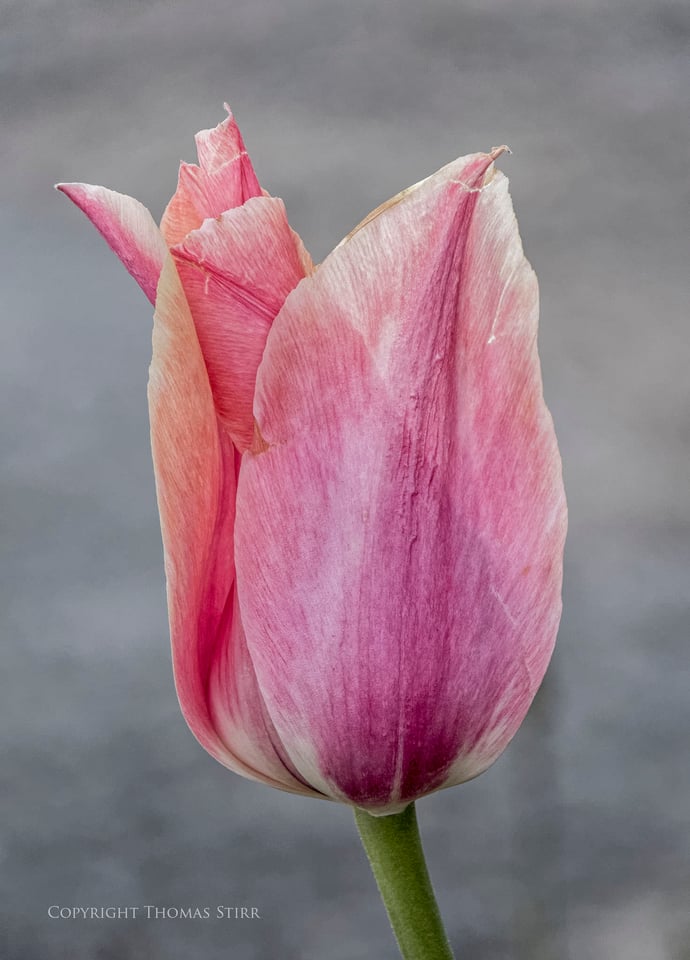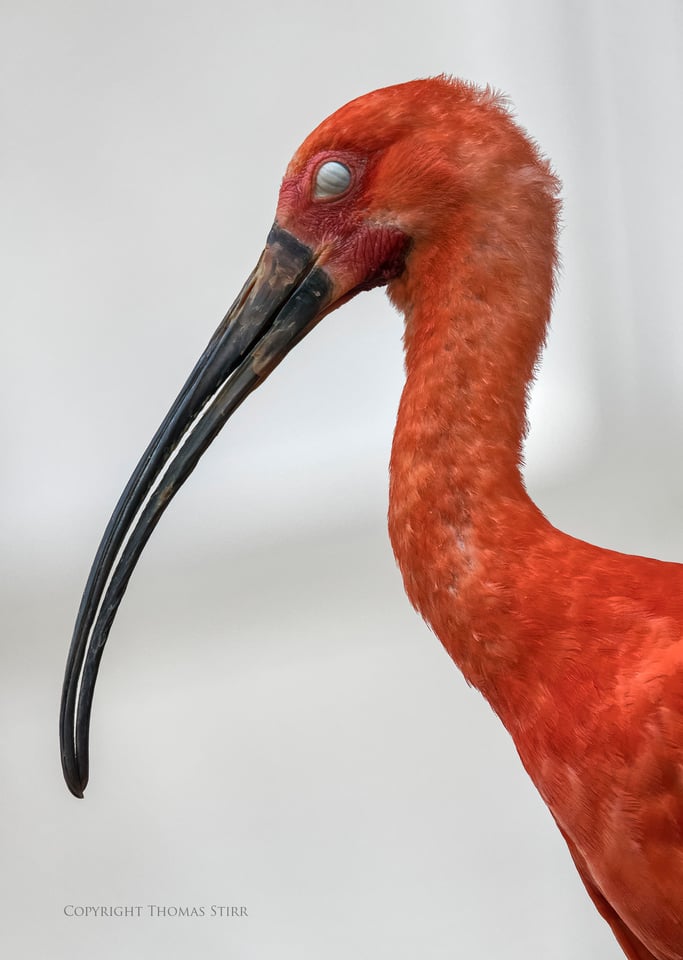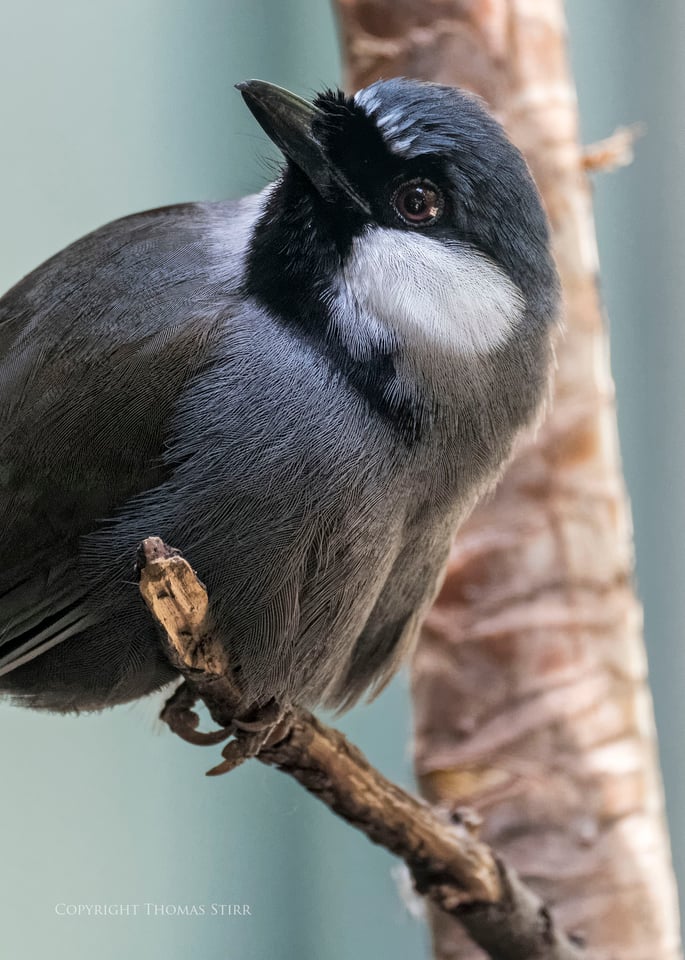It’s been 9 months since I wrote my review of the Nikon 1 J5 and I finally gave in to a bout of GAS (gear acquisition syndrome) that has been lingering for some time, purchasing a J5 this week. I had resisted the temptation to buy this particular camera as I was waiting for the new 20.8MP BSI sensor to find its way into an updated Nikon 1 V-series camera. With the recent earthquakes in Japan delaying various Nikon products the timing seemed right to buy a J5. I have some things planned for the second half of the year where the improved sensor performance of the J5 will be appreciated.
I haven’t had too much time to put this new camera to use, but I did manage a quick photo walk through town and a short visit to Bird Kingdom.

When buying new gear it is always important to clearly define how it will be used and what specifically it does differently, or better, than existing equipment. For me, the Nikon 1 J5 will be my primary camera for landscape images, as well as for flower and insect photography, especially when extension tubes are used. It will also likely become my preferred camera for street photography.

The new 20.8MP BSI sensor in the J5 performs noticeably better than the 14.2MP Aptina sensors in my trio of Nikon 1 V2’s. The dynamic range is rated at 12.0EV compared to 10.8EV according to DxO. Colour depth is also significantly better at 22.1-bits compared to 20.2-bits with my V2’s. This should help create better end results with my landscape, flower and macro-type images.

The sensor in the Nikon 1 J5 also does not have a low-pass filter so images are slightly sharper coming out of the camera. This should have a positive impact on images containing finer details.

There are some challenges of course. The Nikon 1 J5 does not have a viewfinder which is a bit of a hassle for me as I have never liked composing images from the rear screen of a camera. No doubt I will get used to doing this but I think it will be more difficult and a bit more time consuming to achieve the exact framing that I want with my images not having an EVF.

As a result I will likely end up using a monopod or tripod more often than I have in the past with my Nikon 1 gear. I expected to do this anyway with my landscape photography as it will allow me to shoot under a wider range of lighting conditions at ISO-160 which is the base for Nikon 1 cameras. And, as we all know, shooting any camera at base ISO delivers the best dynamic range and colour depth performance.

The Nikon 1 J5 will likely get some sporadic use during my client video work when I need to produce low angle or higher angle video clips as the tilt rear screen will allow me to frame clips without having to get on my belly or mount a ladder as frequently. The absence of an EVF and the inability to use an external microphone with the Nikon 1 J5 are limiting factors for my video business.

The sensor in the Nikon 1 J5 does perform quite a bit differently than the Aptina sensors in my Nikon 1 V2’s in terms of measured ISO. At the exact same manual exposure settings the Nikon 1 J5 (and the J4 and V3 for that matter) will underexpose images and video clips when compared to my Nikon 1 V2’s. It is quite common for digital cameras to have differences between the manufacturers’ stated ISO’s and the actual measured ISO. In the case of the Nikon 1 J5 there is about a 1/3 to 2/5 of a stop difference.

For example, at a manufacturer’s stated ISO of ISO-3200 as in the image above (i.e. the ISO setting on your camera) my Nikon 1 V2’s are actually shooting at ISO-2416. This compares with ISO-1853 with a Nikon 1 J5 or ISO-1750 with a Nikon 1 V3. Differences between manufacturer stated ISO’s and measured ISO’s aren’t of concern to many photographers as all that really matters is getting the right exposure, regardless of what their EXIF data indicates. When matching up video clips from multiple cameras when all manual settings are used it can complicate things.

So, while I will use the Nikon 1 J5 to capture specific types of video clips, my trio of Nikon 1 V2’s with their compliment of 7 batteries will remain the workhorses of my client video business. I usually shoot industrial scenes using multiple cameras so having consistency of exposures is important in terms of reducing editing work in post production.

I very quickly came to love the increased 20.8MP resolution of the J5 compared to the 14.2MP of my V2’s. This allows for a lot more cropping potential. And, when shooting under good lighting conditions will also provide more print enlargement potential.

While I dislike the use of micro-SD cards in the Nikon 1 J5 I can put up with that given the image quality benefits the camera delivers. Not having an EVF and being saddled with a smaller buffer that takes far too long to clear, limits the J5 for birds-in-flight and other types of action photography.

As a still photography tool the Nikon 1 J5 is a significant improvement over my Nikon 1 V2’s and you will see many more of my articles featuring images from this camera in the future. At about $500 US including a 10-30mm f/3.5-5.6 PD kit lens I think the Nikon 1 J5 is a great little camera for the money.
Article and all images Copyright 2016 Thomas Stirr. No use, adaptation of any kind is allowed without express, written consent. Photography Life is the only approved user of this article. If you see it reproduced anywhere else it is an unapproved and illegal use.
I bought a j6 but I find it not useful for macro photo unless there is the possibility to mount different lens or an adapter for my Nikon micro AF lens. Any tip about this? I will be grateful for any suggestion about macro photo
Pls I would love to ask
What do you think about the Nikon 1 j4
And would you be able to use a J5 lense on a j4
All of the Nikon 1 cameras have the same mount and all are able to use the same 1 Nikkor lenses.
The dynamic range and colour depth of the CX sensor in the J5 is noticeably improved over the one that is in the J4 and V3 bodies. So, if overall image quality is important to you the J5 will deliver better quality, especially at base ISO. The J5 has better external controls than the other J-Series cameras and as a result has better handling. The J4 can be used with the Nikon 1 underwater housing.
Tom
Very informative stuff; I bought a J5 last year having owned a couple of V1’s. Inevitably there are a few limitations – no external flash provision and lack of an EVF being the major ones, and while there is little you can do about the former, I’ve found using a 3x screen magnifier with the screen flipped to horizontal allows me to use it like I used to on my old 6×6 TLR’s – i.e. looking down into the viewfinder with the camera at waist level, and yes, you can see the whole screen very well with these things. I use this setup mostly with the PD 10-100, but it also works extremely well attached to a 70-200 2.8 VR (plus FT1) for long shots. If I could send a photo of the setup I would. Hope this helps! Regards etc.
Hi Andy,
Thanks for sharing your experiences with the Nikon 1 J5 – it is always great to hear from real live users! I’ve been out with the J5 a few times now and I am getting more and more used to composing from the rear screen. Not my favourite thing to do, but for the photography genres I intend on focusing on with the J5 I think it will not be a problem at all.
Tom
Lovely work as usual, Tom. I notice this comment you made:
“…the inability to use an external microphone with the Nikon 1 J5 are limiting factors for my video business.”
Don’t you just sync in your editor? I usually use a dedicated audio recorder for the primary audio track, and then I sync all my cameras up in the editor. I use Premiere, and I use PluralEyes to sync all the audio and video together.
Because of that, I never worry that a camera doesn’t have a mic input.
Hi Spy Black,
My audio needs for safety videos are typically quite basic so when needed I capture voice on camera with a shotgun mic, wireless lav or similar.
Tom
Thank you for your thoughts, it is always a pleasure to look at your pictures.
I personally felt a little bit disappointed about the sensor performance of the initial Nikon 1 body’s, but it seems that
with the J5 Nikon goes in the right direction.
Please keep us informed about your work with the Nikon 1 equipment, thanks in advance.
Hi Markus,
The new 20.8MP BSI sensor in the J5 is a significant improvement…I will certainly be using this camera for the majority of my landscape and non-action images.
Tom
12 bit or 14 bit RAW?
I used a V1 for a while but the 12 bit raw was the limitation when the image is pushed in LR compared to the 700D images from the same day with 14 bit, big difference there… 14 bit would be a big step. Using a Coolpix A for most compact camera stuff now and the RAW files are excellent. No super zoom work with the CPA of course.
Dave, The limitation you noticed with the V1 was due to the dynamic range of the sensor being well below 12 bits, not due to it having 12 bits/channel raw instead of 14. If we were to compare the V1 to your Coolpix A set to 12-bit raw, the Coolpix A will have have better shadow detail due to the increased dynamic range of its larger sensor.
“14-bit vs 12-bit RAW – Can You Tell The Difference?”, by John Sherman:
photographylife.com/14-bi…12-bit-raw
Hi Dave,
I had a look on the DxO site re: dynamic range and colour depth of the Nikon 1 V1 and the Canon 700D. There’s actually not that much of a difference with dynamic range scoring 11.0EV for the V1 and 11.2EV for the 700D. These are at base ISO’s of course and depending on the ISO you were using the difference could have been greater at higher ISO’s. There also isn’t much difference in colour depth with the V1 scoring 21.3 and the 700D coming in at 21.7. A difference of 0.4 usually would not be noticeable for most people. Again, these scores are at base ISO and things could be different at higher ISO’s. I’m not familiar enough with 14-bit vs. 12-bit RAW to comment.
Tom
Hi Thomas
Great pictures as usual!!
One thing I would like to read in your future articles about the J5 is any difficulties you experience using the LCD screen in bright sunlight since you don’t have a EVF.
To me the bright sun light is going to create problem which is why I’ve never been a big fan of using my smart phone’s camera or using the LCD screen of DSLRs.
Regards,
Duane
Hi Duane,
Not having an EVF does make things a bit more difficult in terms of composing images for folks like us that prefer a viewfinder. I anticipate taking my wide-brimmed Tilly off my bald head more often to shade the EVF and using a monopod more frequently as a result! The camera is small and light enough that shooting with one hand outdoors is not an issue.
Tom
Hi Thomas
What a brilliant idea in using your wide brim Tilly hat to shade the camera so you can see!!
If I has been as smart at you in coming up with idea I might have considered the J5 instead of hunting for a used V2 (which I bought specially for the EVF and the grip).
Duane
Hi Duane,
The V2 is my favourite V-series camera…and they are very hard to find in the used market! I think you will enjoy the cameras. Who knows…a J5 may still be in your future.
Tom
Beautiful shots and a thoughtful post on the new gear. I find my J5 also great for macro work using a DX lens and FT-1 adapter or close-up lenses. I will be doing more experimenting with extension tubes soon.
I also find the camera very good for street photography. Is looks like a little P&S so people pay less attention to you and seem less self-conscious than if you are hlding a full size DSLR. People are now used to phone cameras everywhere so no EVF also lessns attention to your presence. The practice shooting fom the LCD also helps with my newly converted D600 infrared that i shoot in Live View.
I like my J5 a lot and am glad to see omeone adopting it who will share that experience in places like this website. Keep up the thoughtful posts and beautiful photos.
Thanks for the positive comment Joe – much appreciated! I’m not sure from your post if you are using DX lenses and extension tubes with your J5 and FT-1. My favourite set up for extension tube use is the 1 Nikon 30-110mm with a set of 3 MOVO tubes. It is so light and easy to handle and the 30-110 in this application is a stellar little performer. If you want to try a really small set up I can recommend giving it a try!
Tom
To date I have primarily used the 40mm DX Micro lens with the FT-1 adapter. The setup works quote well but is restricted by the single fixed focus point. I have a set of the Vello extension tubes but have been reticent about using them since my only experience goes back over 30 years on a film Minolta. I do have the 30-110 lens to use with them.
I also have a Canon 500D close-up lens that also works well with my FX setup that i will also use with the 30-110 lens to see which arrangement works best for me. The fun of many options.
Options are always good Joe!
Tom
Hi Tom,
Great article… clear and concise info regarding purchasing/upgrading to a new camera regarding what you are going to use it for and how it is better than what you currently use. Very informative about the differences between your current V2 cameras and the J5. As always, beautiful pictures.
Vinnie
Thanks Vinnie – I’m glad the article was of benefit for you!
Tom
Tom,
Great photo,s, thanks for sharing them. Is the sensor in the j5 the same as the one Nikon will using
In the new DL series camera,s?
Thanks
Sherm
Thanks Sherm – I’m glad that you enjoyed the images! Based on published specifications the 1″ CX sensor in the DL series is 20.8MP so the assumption is that it will likely be the same sensor that is in the Nikon 1 J5. No one knows for sure of course.
Tom